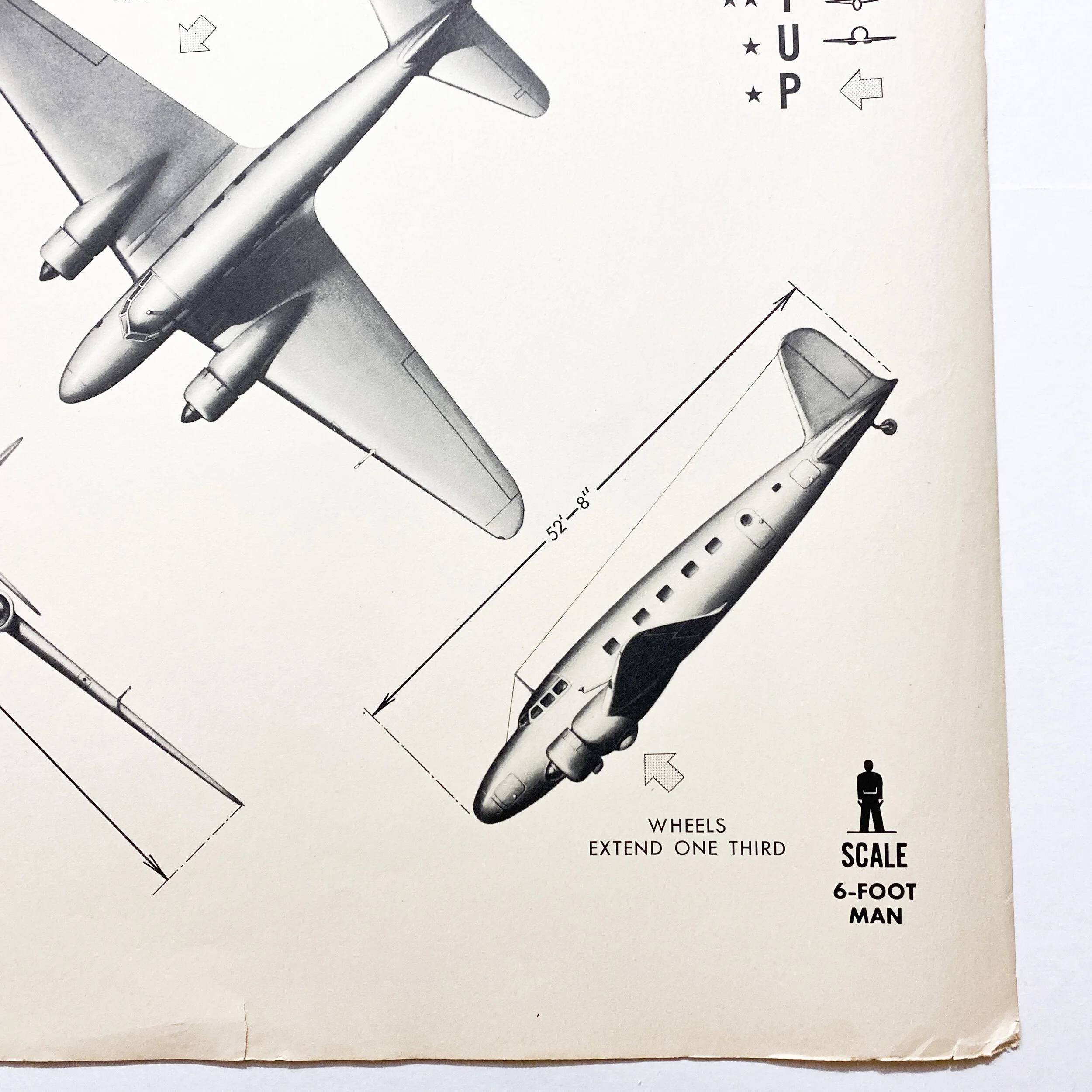Japanese Transport Mitsubishi MC 20 'Topsy' Aviation Training W.E.F.T.U.P. ID Posters







Japanese Transport Mitsubishi MC 20 'Topsy' Aviation Training W.E.F.T.U.P. ID Posters
Size: 19 x 25 inches
This original ‘RESTRICTED’ aircraft identification poster was published by the U.S. Naval Aviation Training Division Jan. of 1943. This poster was posted as a training tool as well as an in theater ID poster to help U.S. and other Allied pilots, bomber crews and Naval personal to identify Allied and enemy aircraft. W.E.F.T.U.P. or Wing, Engine, Fuselage, Tail, Undercarriage, Peculiarities was a system set up for the purpose of aircraft identification and recognition.
World War II saw some of the first introduction of these aircraft ID poster to prevent friendly fire and more accurate plane recognition in combat. It was believed these posters alone could save countless lives from friendly aircraft-on-aircraft or friendly anit-aircraft fire. These posters also could cut down precious second pilots, bomber gunners, and naval gun crews would have to ID a plane flying towards them intern saving their lives by shooting first.
Each poster provides the silhouettes, dimensions, and relevant information to educate both air and ground personnel in aircraft identification. Immediate identification of aircraft, friendly or not, was essential in order for the observer (whether in the air e.g., pilot, gunner, or patrol observer, or on the ground, e.g., anti-aircraft crew) to determine his next course of action (e.g., acknowledge, attack, evade, or report). Each poster details a large clean sky and background image of the specified aircraft located as the main top imagine on the poster. It also contains important ‘peculiarities’ such as where certain gun emplacements are located, other special aircraft features, as well as wing and length measurements.
Mitsubishi Ki-57:
The Mitsubishi Ki-57 was a Japanese passenger transport aircraft, developed from the Ki-21 bomber, during the early 1940s.
In 1938, when the Ki-21 heavy bomber began to enter service with the Imperial Japanese Army, its capability attracted the attention of the Imperial Japanese Airways. In consequence a civil version was developed and this, generally similar to the Ki-21-I and retaining its powerplant of two 708 kW (950 hp) Nakajima Ha-5 KAI radial engines, differed primarily by having the same wings transferred from a mid to low-wing configuration and the incorporation of a new fuselage to provide accommodation for up to 11 passengers. This transport version appealed also the navy, and following the flight of a prototype in August 1940 and subsequent testing, the type was ordered into production for both civil and military use.
This initial production Ki-57-I had the civil and military designations of MC-20-I and Army Type 100 Transport Model 1, respectively. A total of 100 production Ki-57-Is had been built by early 1942, and small numbers of them were transferred for use by the Japanese navy in a transport role, then becoming redesignated L4M1. After the last of the Ki-57s had been delivered production was switched to an improved Ki-57-II, which introduced more powerful 805 kW (1,080 hp) Mitsubishi Ha-l02 14-cylinder radial engines installed in redesigned nacelles and, at the same time, incorporated a number of detail refinements and minor equipment changes. Civil and military designations of this version were the MC-20-II and Army Type 100 Transport Model 2, respectively. Only 406 were built before production ended in January 1945. Both versions were covered by the Allied reporting name "Topsy".